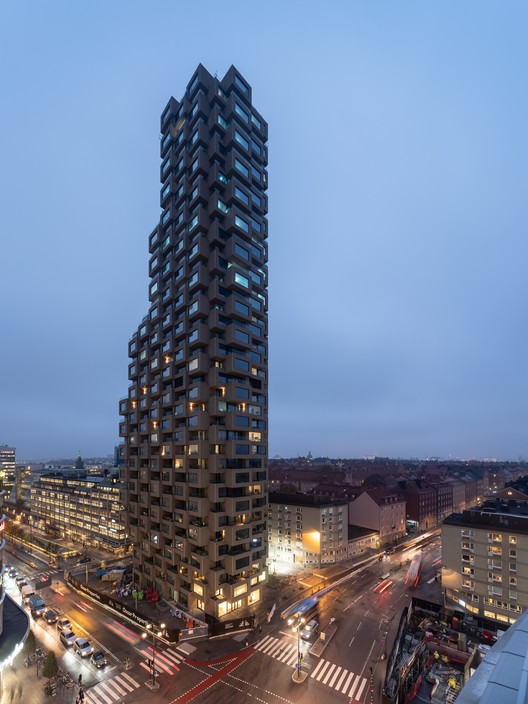
-
Architects: OMA
- Area: 42299 m²
- Year: 2018
-
Photographs:Laurian Ghinitoiu, Ossip van Duivenbode
-
Manufacturers: Aluvesto

Text by Reinier de Graaf. The Norra Tornen project started with two inherited building envelopes, the remains of a cancelled project initiated by the former city architect Aleksander Wolodarski. Each a kind of 'crescendo' composition of different heights – neither slab nor tower – prohibit the unfolding of an uncompromised typology. Conversely, the opted program, apartments with an emphasis on large outdoor spaces, prevented too literal a translation of the envelopes into architectural form.











































